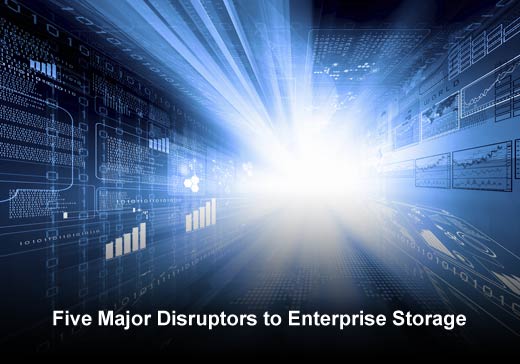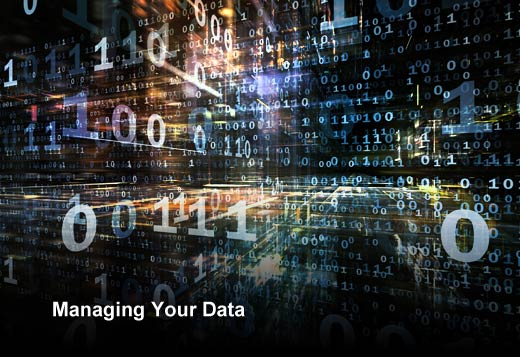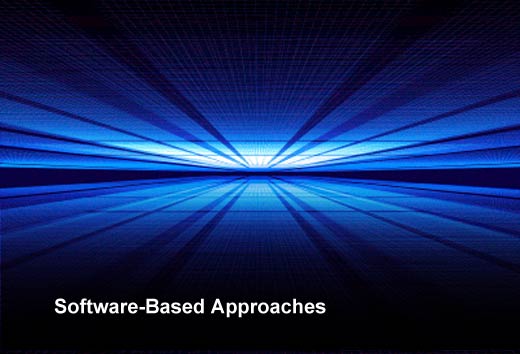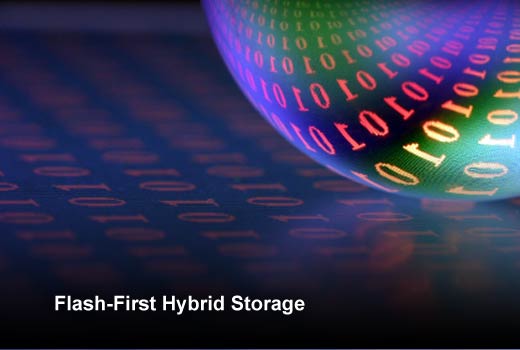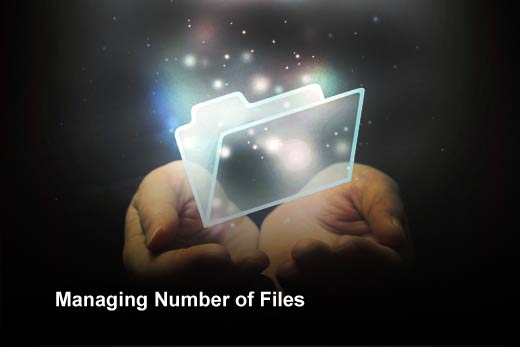“Storage Wars” is a popular reality TV show, but the title may seem all too real to enterprises trying to deal with storage demands as they drown in data. The battlefield has changed dramatically. Organizations are faced with storing billions or even trillions of files – increasingly unstructured data, large digital files such as videos and images. And the old solution – simply adding more physical storage – doesn’t work anymore. It’s too expensive, inefficient and unmanageable.
Fortunately, technology has a way of solving the problems that technology creates, and new approaches to storage are emerging to attack the deluge of data pouring from Internet-connected devices and systems. We are seeing a major shift in how today’s enterprise storage is being developed. The emphasis now is on data management at today’s scale – intelligent, software-based systems that provide scalable, fast and reliable data storage systems and enable organizations to focus on extracting value from data rather than managing storage.
In this slideshow, Brett Goodwin, vice president of Marketing, Qumulo, has identified the top five disruptors in enterprise storage today.
5 Major Disruptors to Enterprise Storage
Click through for the top five disruptors affecting enterprise storage today, as identified by Brett Goodwin, vice president of Marketing, Qumulo.
Managing Your Data
Disruptor #1: A shift from focusing on managing your storage to managing your data (through real-time data analytics).
Data, not the underlying physical storage, is what matters. However, traditional storage systems are “big dumb buckets” that provide precious little insight into what data is growing, what applications or users are accessing it, or what is consuming storage performance and why. Next-generation storage systems are “data-aware,” with real-time analytics built directly into the storage itself, providing real-time information on data and performance at massive scale.
Software-Based Approaches
Disruptor #2: A shift from hardware-based (proprietary) approaches to software-based (using commodity hardware) approaches.
Traditional storage systems were tightly coupled to their proprietary underlying hardware, making storage systems expensive, complex, and requiring “fork lift” upgrades when replacing older, slower systems. Modern storage systems are software-only running on top of commodity x86 hardware. This reduces cost and greatly increases flexibility of deployment. Modern storage is designed to run on-premise, in the cloud, or some combination of both and does not rely on proprietary NVRAM, interconnects, or other hardware components.
Flash-First Hybrid Storage
Disruptor #3: A shift from all hard disk drive based storage systems to flash-first hybrid storage systems (using a mix of flash and spinning hard disk drives).
Flash provides the best storage performance per dollar, delivering approximately 15,000 to 30,000 IOPs per SSD compared to 150 IOPs per hard disk. While the price of flash per gigabyte has declined significantly, it is still roughly 10x more expensive on a cost per GB basis for capacity intensive storage, such as unstructured data. Modern storage systems are designed to optimally use a mix of flash and spinning disk, providing the most economic balance between cost per performance and cost per capacity.
Managing Number of Files
Disruptor #4: A shift from focusing on managing just petabytes of data (size of files) to managing billions and billions of files (number of files).
Traditional storage systems were never designed to handle the hundreds of millions and billions of files that are a reality in today’s digital and Internet-connected world. Processes such as disk or node rebuilds, automatically re-balancing data or tree-walks all break down as the number of files or objects reach high numbers. Modern storage systems are designed to handle tens of billions and ultimately trillions of files, in addition to providing petabytes of raw storage capacity.
Linux-Based OS Approaches
Disruptor #5: A shift from proprietary OS approaches to Linux-based (100 percent user space) OS approaches.
Traditional storage systems rely on a proprietary kernel-based operating system, which was necessary 10 to 20 years ago in order to achieve maximum performance from the storage system. Modern storage systems are designed to run entirely in user mode on top of a standard distribution of the Linux operating system. This accelerates the pace of software innovation, makes fully automated testing of new software possible, and accelerates the ability to support new commodity hardware platforms as they are introduced into the market.


